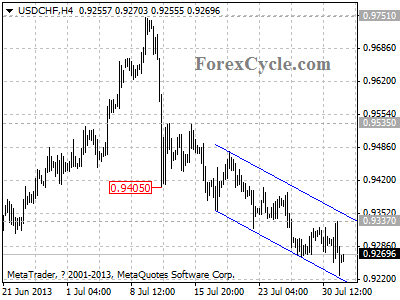By MoneyMorning.com.au
When you break investing down to the basics, there are two key approaches.
And we’re not talking about fundamental or technical analysis.
We’re talking about something different.
And just as it’s possible to combine technical and fundamental analysis, it’s also possible to combine these two approaches.
One of these approaches helped us identify what could be the biggest and most lucrative period for investors in living memory…
To be honest, we don’t really mind which approach we use.
We’ve used both, and they can work equally as well.
The main difference is the direction from which you approach an investment.
We’re talking about ‘top down’ and ‘bottom up’ investing.
If you’re wondering what the heck we’re talking about and how these approaches can help an investor, let us explain…
Should You Analyse Up or Down?
But before we go on, read these two clippings from the same Financial Times article. It will help with the explanation. First:
‘Biotechnology companies are raising money at the fastest rate since the dotcom boom, underscoring the renewed appetite for one of Wall Street’s riskiest bets despite the high chance that the investments will turn sour…‘
And second:
‘Agios Pharmaceuticals, which is developing drugs to treat cancer and rare genetic disorders, raised $122m from an IPO last week and its shares jumped 73.8 per cent on the first day of trading…‘
The first is an example of ‘top down’ analysis (although, in reality there is a level of analysis above the sector level, but we think you’ll get the point).
Top down analysis means looking at something with a wide-angled lens. You’re taking in as big a view of the global economy as you can.
At that point the job of a top down analyst is to work out the biggest trends to impact the global economy. For instance, a top down analyst in the early 1990s may have thought globalisation and electronic communication would be big trends for the next 10 years.
Armed with that worldview, they would have looked for industries and then specific companies to benefit from that view. If the analyst was any good at their job they should have arrived at internet stocks just as the dotcom boom began.
Using a big picture view is how we find breakthrough technologies and stocks in our new Revolutionary Tech Investor investment advisory.
That’s why the FT story caught our eye. Biotechnology is a sector we’re backing heavily in Revolutionary Tech Investor. Half the stocks on the buy list are in biotech.
But as we say, there is another way to analyse stocks, this time from the ‘bottom up’…
It’s Possible to Combine Both Methods
Bottom up analysis is what you’d expect it to be. Instead of taking a big picture view, you look at individual companies. You then analyse how they fit into a particular industry, and the national and international economies.
This type of analysis suits stock scanning or filtering. That is, putting parameters into a stock screening software in order to create a shortlist of stocks.
You may want a list of stocks with a price to earnings (PE) ratio less than 15. Or a list of stocks with a cash balance greater than $1 billion. Or anything else. You may use 3, 4 or 5 filters to cut the stocks down to a final shortlist.
Once you have, say, a dozen stocks, you can analyse each stock for the potential to grow revenues or profits. Alternatively, you may want to find under-valued stocks.
That means looking for companies valued below their peers. If investors then revalue the stock, it could rise without the company increasing revenue and profits (we’ve seen this happen during the dividend stock rally).
As we said at the top of this letter, we use both approaches. They are equally valid. We’re simply looking for the best way to find stocks with the greatest risk/reward potential.
So, how do you analyse stocks? There’s a chance you use one of these methods without even thinking about it. But think about whether you’re a ‘bottom up’ or ‘top down’ investor. Then decide if you’re missing out on good opportunities by limiting the way you research stocks.
What you find out may surprise you. You may even find the other way of researching stocks compliments your current approach, or may even be better.
Cheers,
Kris+
Join Money Morning on Google+
From the Port Phillip Publishing Library
Special Report: The Sixth Revolution
Daily Reckoning: More Fodder For Our Property Debate
Money Morning: The News Gets Worse, So We’re Buying Resource Stocks…
Pursuit of Happiness: Save Now to Avoid the Government’s Retirement ‘Labour Camps’
Australian Small-Cap Investigator:
How to Make Big Money from Small-Cap Stocks




